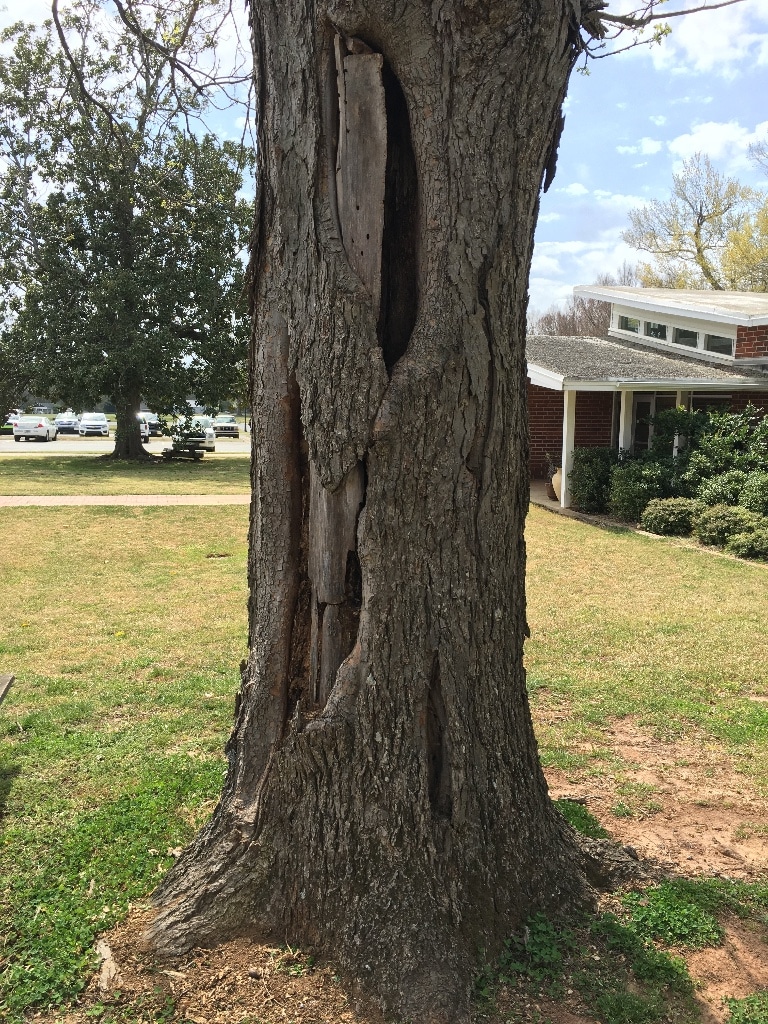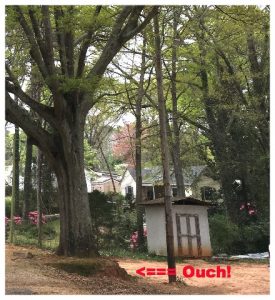Take a Good Look at the Tree
Safety isn’t just a slogan, it’s a way of life.
Before you cut or climb a tree, take time to assess the tree for hazards. Put your hard hat on and take a good look at the tree. Some tree dangers are readily visible, but others can be hiding inside the tree. Danger signs may be subtle, so make a thoughtful inspection of the tree from the ground on up to the top of the crown or canopy.
Inspect the Tree
Make sure you can see the tree clearly.
Pull all the leaf litter and/or mulch away from the base and the root flares. Then remove all vines from the area and the trunk so you can do a clear, visual examination.
Inspect the tree for weaknesses at the base. These are signs and symptoms of root collar decay:
- Loose and dead bark
- Conks or mushrooms
- Crack in the lower trunk
- Sap flow from lower trunk
- Abnormal root flares, diminished, or loss of root flares.
- Soil mounding or grade changes
- Cracks in the soil from ground heaving
Look for cracks, cankers and cavities in the trunk. Strike the base of the tree with a rubber mallet. If this produces a dull sound, the tree is rotten.
Look up into the canopy and among the limbs. Look for fungi on branches and identify dead, broken and/or lodged branches. These are potential falling hazards known as “widow-makers.”
Beware of the Resident Wildlife
Cavities may host more than rot: They may also be nesting sites for wildlife, including slumbering bats, defensive birds, and stinging insects. Noise, droppings, stains on the bark, and insect or animal activity are indications that some critter calls the tree cavity home. Squirrels, birds, and bats may roost in limbs, as well.
Consider the Tree’s Environment
Environmental conditions and surrounding trees should be considered. In wet conditions, saturated soil can lead to root destabilization and trees prone to uprooting. Root pruning caused by construction can increase the chances a tree will fall. Removal of surrounding trees that exposes trees to strong winds can also weaken trees. Check out the video below.
Eerie Footage of Earth Breathing in Nova Scotia 2015
Have you seen this earth breathing video? It is all over the internet and there are many silly explanations offered. This one has it right.
- The Five Step Felling Plan – Step 3 – Plan Your Escape Route - May 2, 2017
- Site Assessment: The Tree - April 11, 2017
- Chainsaw Sculpture - February 14, 2017

